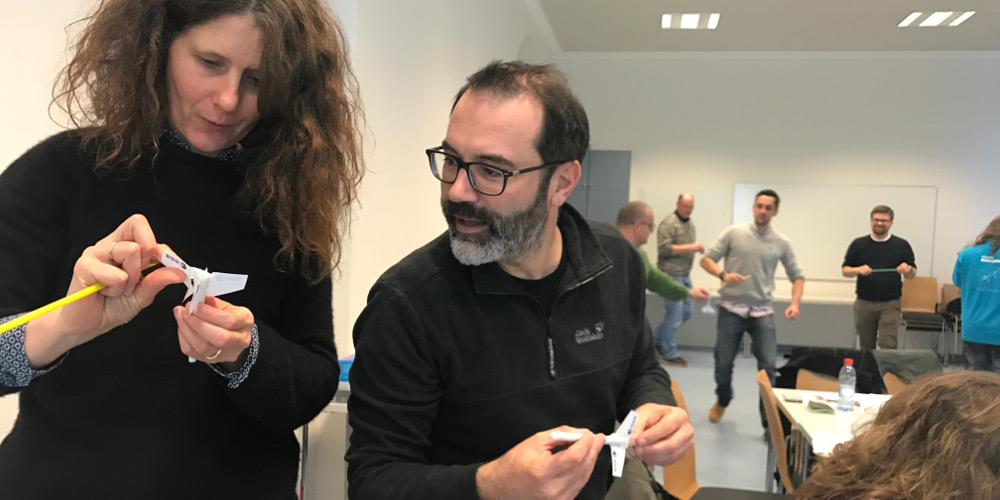Warum hebt eine Rakete eigentlich ab? Fragen rund um die Raumfahrt können Sie mit diesem ESA Unterrichtsentwurf forschungs- und handlungsorientiert mit Schüler*innen erarbeiten.
In vier Gruppenübungen bauen die Schüler*innen drei unterschiedliche Raketen. Die erste ist eine einfache Papierrakete mit einem Strohhalm als Antrieb, in den man hineinbläst. Die zweite ist eine komplexere Papierrakete mit einer Wasserflasche als Antrieb, die man zusammendrückt. Die dritte ist eine Rakete mit chemischem Antrieb. Die Schüler*innen starten ihre Raketen und untersuchen dabei, welche Variablen für Flugstrecke und Flugbahn relevant sind. Dadurch erarbeiten sie sich ein grundlegendes Verständnis der Merkmale und Funktionsweise von Raketen.

Eckdaten:
- Dauer 1 -2 Unterrichtseinheiten
- Vorbereitungszeit: 30 Minuten
- Materialkosten: niedrig bis mittel (unter 20 Euro)
- Unterrichtsform: praktische Gruppenarbeit, forschendes Lernen
Schüler*innen lernen:
- Was eine Rakete ist und warum sie nach oben steigt
- Was eine Rakete stabilisiert und welche Bedeutung die einzelnen Bauteile haben
- Dass die Flugstrecke einer Rakete von der anfänglichen Startenergie und dem anfänglichen Startwinkel abhängt
- Dass Energie nötig ist, damit sich Gegenstände bewegen
- Eigene Ideen entwickeln und zu testen
- Ergebnissen aus Experimenten interpretieren und richtige Schlüsse daraus ziehen
- Eigene Projekte zu entwickeln

Die Unterlagen für diese Ressource bestehen aus einem Lehrer*innen-Teil und einem Schüler*innen-Teil, die hier zum Download verfügbar sind. Die Unterlagen enthalten Hintergrundinformationen, Unterrichtsabläufe und Arbeitsblätter.

